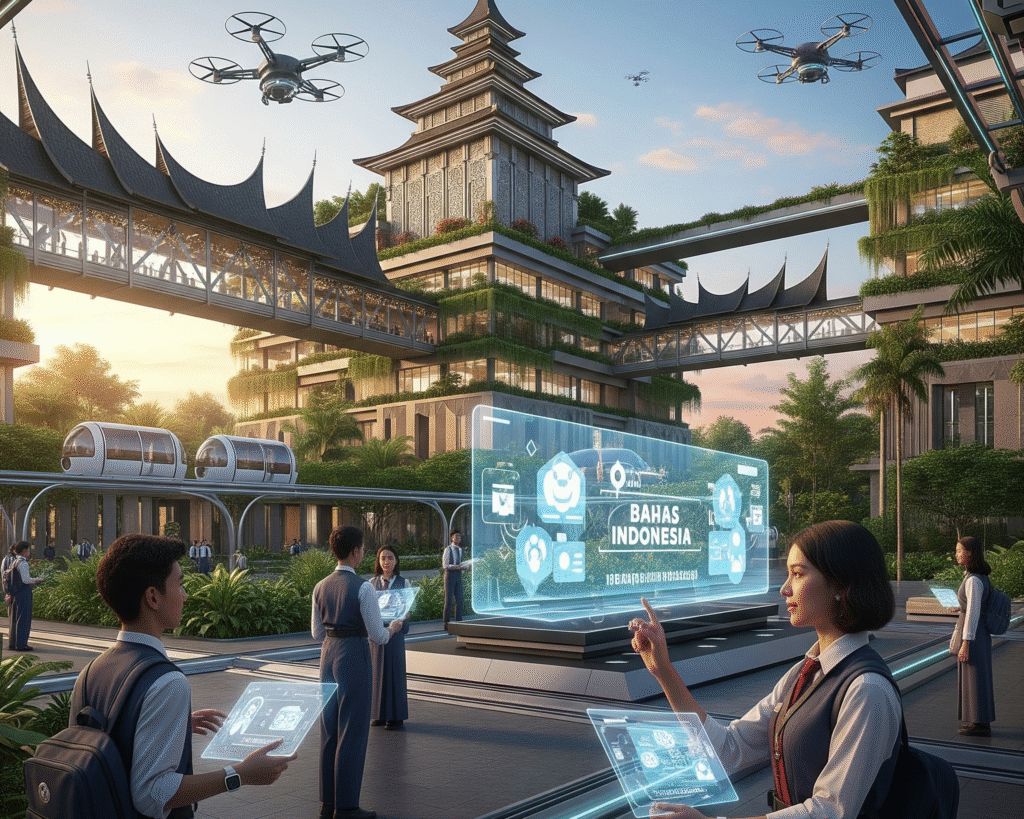Unit 13 – The Future of Education
Warm-up and Vocabulary

Key Vocabulary
Education Methods and Technology
- Traditional Education: The long-established system of education with teachers, classrooms, and textbooks.
- Online Learning: Education that takes place over the internet.
- Virtual Reality (VR): A computer-generated simulation of a three-dimensional environment that can be interacted with
- Artificial Intelligence (AI): The ability of a computer to do tasks that normally require human intelligence.
- Personalized Learning: An educational approach where learning is customized to the individual student’s needs and pace.
- Skill-based: Focusing on teaching practical skills rather than just academic knowledge.
Learning Skills and Work Styles
- Critical Thinking: The objective analysis of facts to form a judgment.
- Remote: Done from a distance, without being physically present.
Interactive Activity: My Ideal School
Developing Perspectives: Comparing and Constrasting in Spoken Response
In academic lectures and discussions, speakers often explain a topic by comparing and contrasting it with something else.
- Comparing = Showing how things are similar.
- Contrasting = Showing how things are different.
To follow the speaker easily, you need to listen for signal words. These words are clues that tell you a comparison or contrast is coming.
Signal Words to Listen For
| For Similarities (Comparing) | For Differences (Contrasting) |
| similarly | in contrast |
| likewise | however |
| both … and … | on the other hand |
| also, too | whereas / while |
| just as | unlike |
Let’s look at an example.
Example Audio Script (Lecture):
“Both traditional and online learning aim to educate students. Similarly, they both require students to complete assignments and take exams. However, the learning environment is a major point of difference. In a traditional setting, students interact directly with teachers and peers. In contrast, online learning offers more flexibility, allowing students to study from anywhere at any time.”
Question: According to the speaker, what is one way traditional and online learning are different?
- The answer would be that traditional learning involves direct interaction, whereas online learning offers more flexibility.
Tips for Success
Here are three tips to help you master listening for comparisons:
- Listen for the “Road Signs”: Think of signal words like however and similarly as road signs. When you hear one, your brain should know that a change or a connection is coming.
- Organize Your Notes: When you hear two things being compared, make a simple Two-column chart in your notes. Put one thing on the left and the other on the right. List their features below them. This makes the differences easy to see.
- Anticipate the Question: As soon as you hear a comparison being made, you can guess that a question will ask about it. Pay close attention to the specific points of difference or similarity the speaker mentions.
Skill Practice
Let’s practice with a short conversation.
A. Multiple-Choice Questions
B. Fill in the Blanks
C. Crossword Puzzle
D. Word Search
E. Video Practice
You are a technology reviewer for a popular YouTube channel. Watch this video demonstrating how Virtual Reality (VR) is being used in a classroom. Your task is to record a 30-second review of this technology for education. In your review, you must state one clear advantage and one potential disadvantage of using VR for learning.